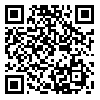BibTeX | RIS | EndNote | Medlars | ProCite | Reference Manager | RefWorks
Send citation to:
URL: http://ismj.bpums.ac.ir/article-1-769-en.html
2- Department of Marine Biology, faculty of Marine Science, Tarbiat Modares University, Tehran, Iran ,
Background: Sea anemone is ocean dwelling and typically organisms sessile. These tentacles produce a variety of peptides and proteins that act as, neurotoxins and cytolysins toxins. Cytolysins due to their effect on specific tissue and lysing properties are known as antiparasitic or antitumor compounds.
Materials and Methods: Sea anemone Stichodactyla haddoni were collected from the coast of Hormuz Island in November 2012 and tentacles extraction was performed by using of saline PBS solvents. Peptides above 10kDa and peptides below 10kDa were separated by amicon® Ultra-15 10K device. The hemolytic activity was assessed by the micro hemolytic method for human, rainbow trout Oncorhynchus mykiss and common carp Cyprinus carpio erythrocytes.
Results: Uniform red color suspension in the wells considered as positive hemolysis. The crude extracts, peptides above 10kDa and peptides below 10kDa at various concentrations were showed hemolytic effect on human, common carp Cyprinus carpioand rainbow trout Oncorhynchus mykiss erythrocytes.
Conclusion: The crude extract, peptides above 10kDa and peptides below 10kDa have a hemolytic effect on human erythrocytes and two species of fish. The venoms showed the most hemolytic activities on human blood among others.
Received: 2014/05/20 | Accepted: 2015/02/25 | Published: 2016/02/25
| Rights and Permissions | |
 |
This work is licensed under a Creative Commons Attribution-NonCommercial 4.0 International License. |






